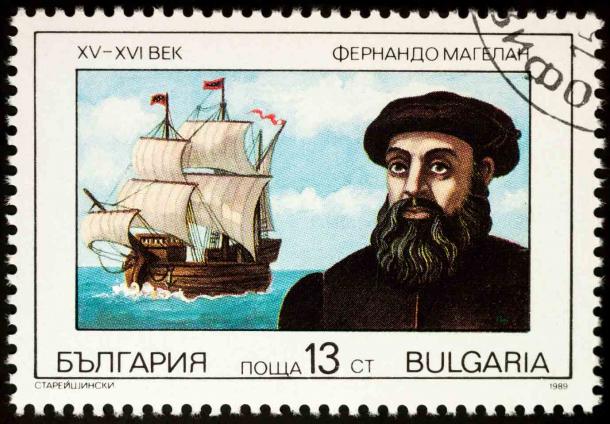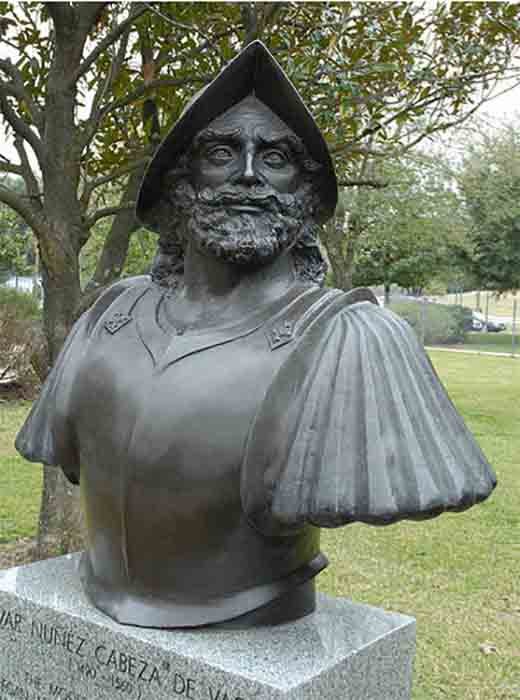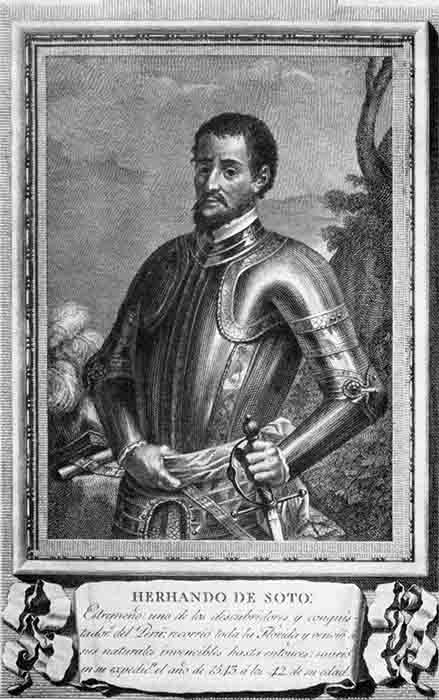Over five-hundred years ago, European monarchs began dispatching their most masterful navigators to the far reaches of the planet, marking the beginning of the Age of Discovery. Epic voyages occurred across vast and treacherous oceans fueled by the zeal of discovery, the greed of conquest, and the tempestuous winds of the seven seas. Upon their return, these early explorers presented their kings and queens with detailed, wonderous reports of exotic flora, fauna, spices, minerals, and lost cities. Encounters with natives was another standard element of these expedition reports, sometimes they were peaceful and sometimes hostile. Each of these elements was entirely expected, each that is, except one: the enigmatic encounters of early explorers with the unusual natives of the lands they “discovered.”

Ferdinand Magellan, the first of the early explorers to circumvent the globe, and his ship on a Bulgarian postage stamp. ( Vic / Adobe Stock)
Early Explorers: Ferdinand Magellan & Antonio Pigafetta
Portuguese-born, Spanish-crown-commissioned captain Ferdinand Magellan may be the most renowned of all early explorers. His circumnavigation of the globe was the first in recorded history and is arguably the greatest sea voyage in the Age of Discovery . Between 1519 and 1522 AD the intrepid crew of the carrack, aptly named “The Victoria,” rounded the southern tip of South America. They named this land Patagones, the Spanish pata meaning foot hence this name means “the land of the bigfeet.” According to the official chronicles, painstakingly recorded by Antonio Pigafetta, as they approached the shore of this strange land, they witnessed a giant, naked man dancing and anointing himself with powder. A crew member was sent ashore to make contact and did so by imitating the giant’s gestures.
The First “Patagonia” Account
“When the giant was in the captain-general’s and our presence he marveled greatly, and made signs with one finger raised upward, believing we had come from the sky. He was so tall that we reached only to his waist, and he was well proportioned.”
The explorers initiated contact with the giant’s tribe and offered them gifts of food and drink, and there was a note made that they were utterly terrified when they saw a mirror. After a couple weeks, the explorers attempted to abduct two of them to bring home as evidence of their enigmatic encounter; however, the two they captured perished and were disposed of during the long odyssey back to Spain. Modern historians minimize this account by accusing Pigafetta of exaggeration, but aside from this tiny fraction, the entirety of the circumnavigation chronicle is hailed as exquisitely accurate.

Sir Francis Drake also circumvented the globe and met strange natives in Patagonia. ( Vic / Adobe Stock)
Early Explorers: Sir Francis Drake Circumvents The Globe
Then in 1579, English explorer Sir Francis Drake completed the second circumnavigation in recorded history. His expedition’s chronicler and ship chaplain Francis Fletcher recorded similar observations of the Patagonians. The first detailed account of Drake’s circumnavigation was published in 1628: The World Encompassed , written by Drake’s own nephew who bore the same name. In it, he writes:
“Magellan was not all together deceived, in naming them giants; for they generally differ from the common sort of men, both in stature, and strength of body; as also in the hideousness of their voice: but yet they are not so monstrous, or giant like as they were reported; there being some English men, as tall, as the highest of any that we could see, but peradventure, the Spaniards did not think, that ever any English man would come thither, to reprove them; and thereupon might presume the more boldly to lie: the name Patagones, five cubits (seven foot and a half)[2.3 meters], describing the full height (if not somewhat more) of the highest of them. But this is certain, that the Spanish cruelties there used [Magellan’s abductions] have made them more monstrous, in mind and manners, then they are in body; and more inhospitable; to deal with any strangers, that shall come thereafter.”
Analyzing Accounts and Accusations
Upon analysis of these accounts and the accusations therein, it is interesting that Drake’s nephew suggests the earlier explorers exaggerated , but in the very same, extremely long-winded pages, he confirms the existence of an abnormally large tribe of natives who stood seven-feet-six-inches (2.3 meters) tall and who had “hideous” voices.
Drake the nephew seems far more concerned with an attack on Magellan and Pigafetta than the claim which was essentially made during his own uncle’s experiences. In other words, whether these inhabitants were ten feet (3 meters) or seven-and-a-half-feet (2.3 meters) tall is a matter of mere semantics. And both early explorers, who are both irrefutably credible, encountered tribes of extremely tall and powerful human beings who dwelt in the Patagonian wilderness.

Early explorer Jacob Le Maire from Antonio de Herrera’s India Occidentales. (Cornell University: Southeast Asia Visions / Public domain )
Other Strange Encounters Experienced By Early Explorers
In 1615, Dutch navigators Willem Schouten and Jacob Le Maire were completing their own circumnavigation of the globe, while in the employ of the East India Trading Company. These explorers reported their discovery of an ancient grave that contained within it bones of bizarre humans who, by their calculations, must have stood about eleven feet (3.4 meters) tall.
In the 1590s AD, an English sailor by the name of William Adams made note of a violent confrontation between his Dutch ship’s crew and the enormous natives of Chile’s southernmost islands.
And in the 1580s AD, English adventurer Anthony Knivet returned home after surviving a grand journey to the depths of South America, and in his account, he claimed to have witnessed the corpses of dead giants that he measured to be twelve feet (3.7 meters) tall.
Beyond Patagonia: Other Enigmatic Reports From Explorers
These enigmatic encounters were not isolated to Patagonia. In fact, similar reports continued to make their way back to Europe through a wide range of early explorers spanning the entire Age of Discovery period. So much so, that on many early maps of the “New World” the landmass is labelled Regio Gigantum “the region of the giants.”
North America is awash with early reports of gigantic inhabitants and centuries after the Age of Discovery these reports seem to be confirmed by the hundreds of accounts of enormous/anomalous skeletons that were unearthed from the myriads of burial and effigy mounds (but that is another subject all together).

A monument dedicated to the explorer Álvar Núñez Cabeza de Vaca in Houston, Texas. (No machine-readable author provided. Ealmagro assumed (based on copyright claims) / CC BY-SA 4.0 )
Conquistador Account #1
In the 1520s AD, Spanish soldier and conquistador Panfilo de Narvaez led a disastrous campaign in what is today northern Florida. The invasion was doomed due to a lack of supplies and mutinous crew members. They were ultimately ravaged by disease combined with assaults by the natives.
One of Narvaez’s crew who did managed to survive was a young officer named Alvar Nunez Cabeza de Vaca who, along with a few other rugged survivors, traveled by raft from Florida to the coast of Texas.
In de Vaca’s journal, he describes a violent encounter the soldiers had with native giants as they were crossing a lake aboard their makeshift vessel. “When we attempted to cross the lake, we came under heavy attack from many giant Indians concealed behind trees. Some of our men were wounded in this conflict for which the good armor they wore did not avail. The Indians we had so far seen are all archers. They go naked, are large of body, and appear at a distance like giants. They are of admirable proportions, very spare and of great activity and strength. The bows they use are as thick as the arm, of eleven or twelve palms in length, which they discharge at two hundred paces with so great precision that they miss nothing.”

A portrait of Hernando de Soto who travelled across Florida and Alabama. (Grabado de Juan Brunetti por dibujo de José Maea / Public domain )
Conquistador Account #2
In October of 1540, conquistador Hernando de Soto led his men into what is modern day Alabama where they encountered a tribe of what seemed to have been typical natives, who were ruled over by a paramount chief of great physical stature named Tuskaloosa.
Rodrigo Ranjel, a member of de Soto’s party, chronicled the encounter in his journal. “The chief was on a kind of balcony on a mound at one side of the square, his head covered by a kind of coif like the almaizal, so that his headdress was like a Moor’s which gave him an aspect of authority; he also wore a pelote, or mantle of feathers down to his feet, very imposing; he was seated on some high cushions, and many of the principal men among his Indians were with him. He was as tall as that Tony (Antonico) of the Emperor, our lords guard, and well proportioned, a fine and comely figure of a man. And although the Governor (de Soto) entered the plaza and alighted from his horse and went up to him, he did not rise, but remained passive in perfect composure and as if he had been a king.”

The title page of Bernal Diaz del Castillo’s The True History of the Conquest of New Spain, which tells his tales of exploration in the “New Spain” of the New World, published in 1632. (John Carter Brown Library / Public domain )
Conquistador Account #3
Bernal Diaz del Castillo was a conquistador who, under the command of Hernan Cortes, participated in the Spanish conquest of the Aztecs in Mexico. In their own chronicle: The True History of the Conquest of New Spain , there is an account of their communications with the native Tlaxcalteca Indians who told them of their tradition of a race of giants that had previously inhabited the land before their ancestors had displaced them.
“They said their ancestors had told them that very tall men and women with huge bones had once dwelt among them. But because they were a very bad people with wicked customs, they had fought against them and killed them, and those of them who had remained died off. And to show us how big these giants had been they brought us the leg-bone of one, which was very thick and the height of an ordinary-sized man, and that was a leg bone from the hip to the knee. I measured myself against it, and it was as tall as I am, though I am of reasonable height. They brought other pieces of bone of the same kind, but they were all rotten and eaten away by the soil. We were all astonished by the sight of these bones and felt certain there must have been giants in that land.”
New Evidence Shows That Patagonia Was Settled Before Alaska
Exiting the Age of Discovery for a moment, it is objectively reasonable to consider that if these reports are indeed valid, there must be additional archaeological and or anthropological evidence. And if there’s not, then that casts significant doubt on the accounts.
In 1897, American explorer Frederick Albert Cook teamed up with the missionary Thomas Bridges in studying the mysterious Ona and Yahgan tribes of Patagonia. During this anthropological investigation, they photographed an Ona man who stood seven-feet-four-inches (2.23 meters) tall. Furthermore, the man’s custom was to go naked. This photograph simply entitled “Ona Man” exists in the Library of Congress for all to see.
Recent archaeological excavations in southern Chile have quietly been upending preconceived notions about the history of the region. Distinguished American archaeologist and anthropologist Tom Dillehay of Vanderbilt University has uncovered evidence of habitation in southern Chile dating back to 31,000 BC. This site is located some 8,000 miles (12,874 km) south of the Bering Strait (linking Alaska and Russia), and essentially proves that the Clovis Culture, who crossed the land bridge in roughly 20,000 BC, were not the first inhabitants of the Americas.
Conclusions
So far, Dillehay has not published any discoveries of human remains excavated at these ancient sites in southern Chile, but the Cook photograph is a rather compelling confirmation, not to mention the wide variety of early explorer’ reports.
;
And then there are the intriguing accounts of early American archaeologists who, according to official Bureau of Ethnology reports, all indicate the presence of genetically unique humans present in the Americas before the arrival of the Native Americans, who by the way, also confirm this in their oral traditions.
One thing is for certain, many clues to human history remain hidden and await discovery in Patagonia. This puzzling kaleidoscope of history, legend, and physical science also crystalizes the intimate relationship between history and mythology: these are not mutually exclusive opposites (a truly primitive concept). The definition of history is an account of the past.
Therefore, when it comes to history and mythology there exists a spectrum, with pure fiction on one end and fact on the other, with an endless variety of perspectives and interpretations in between.
Top image: During the Age of Discovery Europe’s early explorers encountered tall people and tales of big people all over North and South America. Source: Stanisic Vladimir / Adobe Stock
By Mark A. Carpenter
References
Cornelison, Willem. The Relation of a Wonderful Voyage made by Willem Cornelison Schouten of Horne. Showing how South from the Straights of Magellan in Terra Delfuego: he found and discovered a new passage through the great South Seas, and that way sailed round about the world. London: Imprinted by T.D. for Nathanael Newbery. 1619.
Díaz del Castillo, B., Burke, J., & Humphrey, T. (2012). The True History of the Conquest of New Spain . Indianapolis, Indiana: Hackett Pub.
Drake, Francis (1628), The World Encompassed by Sir Francis Drake : being his next voyage to that to Nombre de Dios Elibron, Classics series, Issue 16 of Works issued by the Hakluyt Society, Adamant Media Corporation.
Mithen, S. After the Ice: A Global Human History 20, 000-5000 BC. Orion Books, 2003.
Ranjel, Rodrigo. “A Narrative of de Soto’s Expedition based on the Diary of Rodrigo Ranjel”. Edward G. Bourne (trans.). 1554. Archived from the original on 2009-03-17. /20th century translation
Pigafetta, Antonio . Magellan’s Voyage Around the World (1906 ed.). tr. James Alexander Robertson.
Related posts:
Views: 0
 RSS Feed
RSS Feed

















 January 28th, 2021
January 28th, 2021  Awake Goy
Awake Goy  Posted in
Posted in  Tags:
Tags: 
















